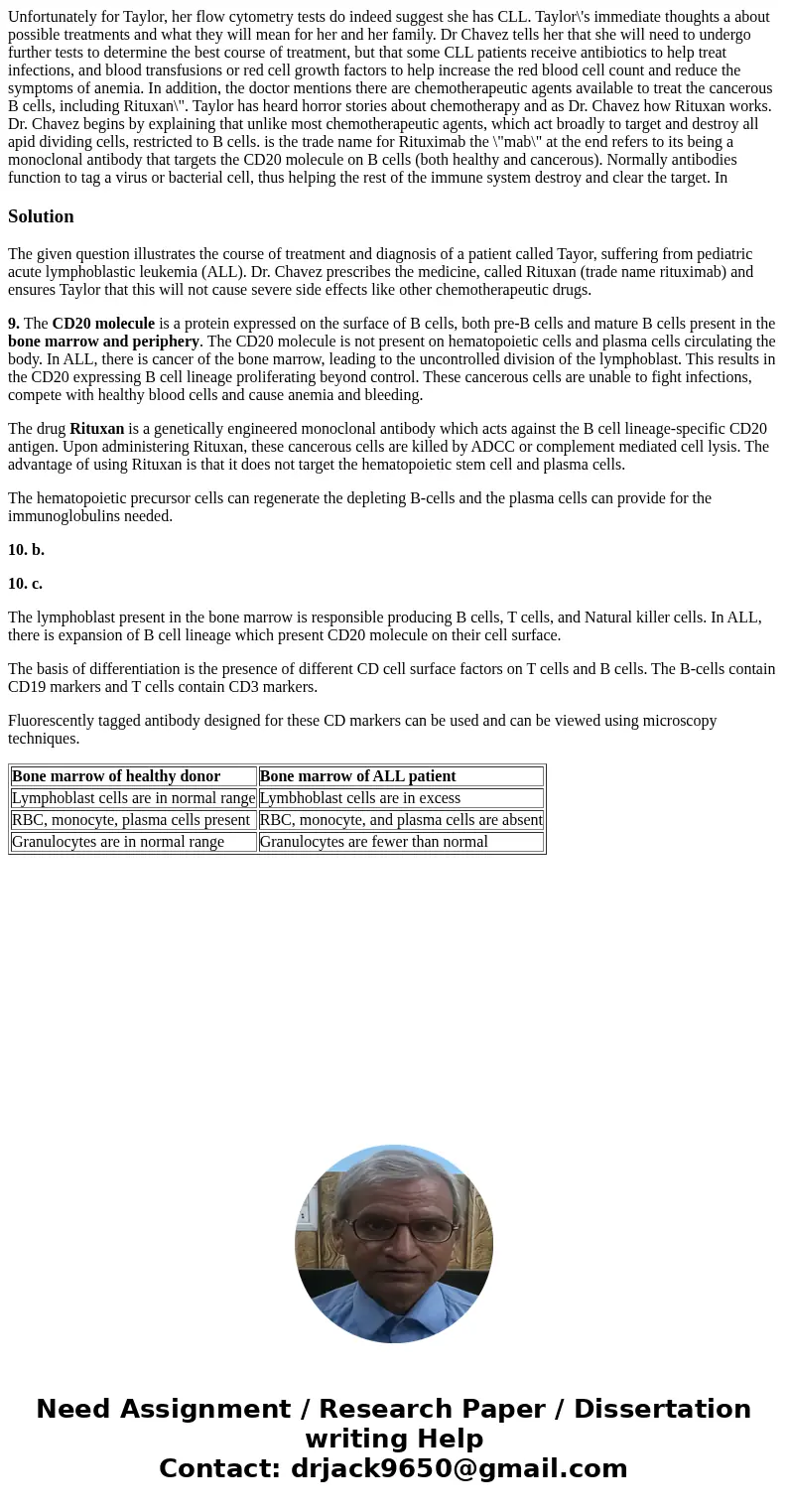Unfortunately for Taylor her flow cytometry tests do indeed
Solution
The given question illustrates the course of treatment and diagnosis of a patient called Tayor, suffering from pediatric acute lymphoblastic leukemia (ALL). Dr. Chavez prescribes the medicine, called Rituxan (trade name rituximab) and ensures Taylor that this will not cause severe side effects like other chemotherapeutic drugs.
9. The CD20 molecule is a protein expressed on the surface of B cells, both pre-B cells and mature B cells present in the bone marrow and periphery. The CD20 molecule is not present on hematopoietic cells and plasma cells circulating the body. In ALL, there is cancer of the bone marrow, leading to the uncontrolled division of the lymphoblast. This results in the CD20 expressing B cell lineage proliferating beyond control. These cancerous cells are unable to fight infections, compete with healthy blood cells and cause anemia and bleeding.
The drug Rituxan is a genetically engineered monoclonal antibody which acts against the B cell lineage-specific CD20 antigen. Upon administering Rituxan, these cancerous cells are killed by ADCC or complement mediated cell lysis. The advantage of using Rituxan is that it does not target the hematopoietic stem cell and plasma cells.
The hematopoietic precursor cells can regenerate the depleting B-cells and the plasma cells can provide for the immunoglobulins needed.
10. b.
10. c.
The lymphoblast present in the bone marrow is responsible producing B cells, T cells, and Natural killer cells. In ALL, there is expansion of B cell lineage which present CD20 molecule on their cell surface.
The basis of differentiation is the presence of different CD cell surface factors on T cells and B cells. The B-cells contain CD19 markers and T cells contain CD3 markers.
Fluorescently tagged antibody designed for these CD markers can be used and can be viewed using microscopy techniques.
| Bone marrow of healthy donor | Bone marrow of ALL patient |
| Lymphoblast cells are in normal range | Lymbhoblast cells are in excess |
| RBC, monocyte, plasma cells present | RBC, monocyte, and plasma cells are absent |
| Granulocytes are in normal range | Granulocytes are fewer than normal |

 Homework Sourse
Homework Sourse